zeppelindiver
Contributor
This is the second post in our Facebook series about exploring Guanaja; we decided to go below the waves this time & will finish up the land tour in our next post. We thought that the Scubaboard members might also find it interesting. The coral reefs and over 40 dive sites of Guanaja make this island a new favourite for Zeppelin Dive & Sail. What an underwater showcase!
The reefs here and in Roatan are part of the Mesoamerican barrier reef system which starts in Belize and is the second largest reef in the world after the Australian Great Barrier Reef. We loved the variety of the topography during our dives and had a chance to sample caves, tunnels, canyons, towering pinnacles and endless healthy reefs. The northeast end of Guanaja is actually volcanic, making for incredible underwater topography with mazes of tunnels & caverns on sites such as Black Rock & Labyrinth, and its all in less than 60 feet of water in that area. The south side has walls that drop off forever just like Roatan, but the reef structure extends much farther out from shore, making for a great choice of types of dive sites.
So far we have only done about 10 dives around the island, but the beauty is that you have a choice of which side you would like to dive and if the winds are blowing from the east or south you can dive on the north side, if from the north or west then its over to the south side. There is super easy access as Guanaja has a canal that cuts through the island, which is the main highway for small boats going from the north side to the south side of the island. This makes the choices for dive sites stress-free and allows for so much simplicity if the weather is not cooperating. We can get from one side of the island to the farthest away dive site on the other side in 30 minutes or less without ever leaving the protected waters inside the reefs, and the ride is so beautiful we actually did it one day when we werent diving just to sightsee!
The dive sites on the north side are mostly marked with buoys maintained by Bo Bush from Bos Island House Resort. We had the pleasure of meeting Bo on this trip and he was kind enough to take us to 2 spectacular dive sites on the north side of the island. Bo is a born & raised Guanaja islander and Divemaster and knows the island inside & out, both above & below the water. His family run, small rustic dive resort on the north side is a great place to stay to dive & explore the north side.
We also met a local fellow Peter who has been a Divemaster for many years and worked at Posada del Sol, one of the premier island resorts before it folded as a result of Hurricane Mitch followed by Hurricane Divorce. He joined us for 4 days of diving and knows both sides of the island well but most importantly knows the sites on the south shore that do not have mooring buoys (since the resort folded they are not maintained).
Our goal during our research time on Guanaja was to dive a number of sites that we think our guests would like to see and it was an easy task to complete! The island has incredible fish life, canyons and caves, tunnels, swim throughs, enormous coral formations, all extremely healthy and in all shapes, sizes and kinds. This is diving the way Roatan was 20 years ago, before there was any significant development on the island and when there were few divers.
One amazing site is Jims Silver Lode, it has a large cavern swim through (which we have now named the Lionfish Lair) in which we saw at least 20 lionfish hanging out and a 4 foot long nurse shark sleeping, not to mention thousands of silversides. That cavern proved to be a tad challenging, there were so many silversides it turned the dive into a night dive in the middle of the day & we were negotiating the lionfish while shining the flash light and taking photos in the dark all while maintaining buoyancy and not getting too close to the lionfish venomous spines to be stung!
Heres a few did you know facts about lionfish: they live for decades; they inhabit all marine habitat types and depths up to 1000 feet deep; they become sexually mature in less than a year; reproduction occurs every 4 days all year long and in the Caribbean a female can spawn over 2 million eggs per year! Yikes!
Guests often ask us if there are sharks on Roatan. We have been diving around Roatan and Cayos Cochinos for over 2 years now and havent seen any. We know others have but they certainly arent common. In the 10 dives we have done on Guanaja we have seen 4 nurse sharks all around the 5 6 feet in length. We had rarely seen a nurse shark swimming before, as they have always been relaxing in the sand because they are primarily nocturnal, but this time we saw a couple of them swim by and it was spectacular.
There are not many dive operations in business right now, on the north side you have Bos Island House & another small boutique operation called G&Gs Clearwater Paradise. On the south side there is nothing in operation, however Dunbar Rock House & Grahams Place Resort are both working on getting new dive shops up & running and should be ready soon. Of course soon is a relative term, we are still in the Bay Islands!
If you have your own gear, including tanks etc., you can get air fills at the Willmont Bay gas station, Bill Blakie runs a great service there, we had 8 tanks filled for 400 lempiras total in less than an hour. Yes, thats right $2.50 per tank for air fills. Bill also runs dive charters in his boat from there or can hook you up with a local DM if hes busy, thats how we found Peter. We hope you enjoy the photos!
The reefs here and in Roatan are part of the Mesoamerican barrier reef system which starts in Belize and is the second largest reef in the world after the Australian Great Barrier Reef. We loved the variety of the topography during our dives and had a chance to sample caves, tunnels, canyons, towering pinnacles and endless healthy reefs. The northeast end of Guanaja is actually volcanic, making for incredible underwater topography with mazes of tunnels & caverns on sites such as Black Rock & Labyrinth, and its all in less than 60 feet of water in that area. The south side has walls that drop off forever just like Roatan, but the reef structure extends much farther out from shore, making for a great choice of types of dive sites.
So far we have only done about 10 dives around the island, but the beauty is that you have a choice of which side you would like to dive and if the winds are blowing from the east or south you can dive on the north side, if from the north or west then its over to the south side. There is super easy access as Guanaja has a canal that cuts through the island, which is the main highway for small boats going from the north side to the south side of the island. This makes the choices for dive sites stress-free and allows for so much simplicity if the weather is not cooperating. We can get from one side of the island to the farthest away dive site on the other side in 30 minutes or less without ever leaving the protected waters inside the reefs, and the ride is so beautiful we actually did it one day when we werent diving just to sightsee!
The dive sites on the north side are mostly marked with buoys maintained by Bo Bush from Bos Island House Resort. We had the pleasure of meeting Bo on this trip and he was kind enough to take us to 2 spectacular dive sites on the north side of the island. Bo is a born & raised Guanaja islander and Divemaster and knows the island inside & out, both above & below the water. His family run, small rustic dive resort on the north side is a great place to stay to dive & explore the north side.
We also met a local fellow Peter who has been a Divemaster for many years and worked at Posada del Sol, one of the premier island resorts before it folded as a result of Hurricane Mitch followed by Hurricane Divorce. He joined us for 4 days of diving and knows both sides of the island well but most importantly knows the sites on the south shore that do not have mooring buoys (since the resort folded they are not maintained).
Our goal during our research time on Guanaja was to dive a number of sites that we think our guests would like to see and it was an easy task to complete! The island has incredible fish life, canyons and caves, tunnels, swim throughs, enormous coral formations, all extremely healthy and in all shapes, sizes and kinds. This is diving the way Roatan was 20 years ago, before there was any significant development on the island and when there were few divers.
One amazing site is Jims Silver Lode, it has a large cavern swim through (which we have now named the Lionfish Lair) in which we saw at least 20 lionfish hanging out and a 4 foot long nurse shark sleeping, not to mention thousands of silversides. That cavern proved to be a tad challenging, there were so many silversides it turned the dive into a night dive in the middle of the day & we were negotiating the lionfish while shining the flash light and taking photos in the dark all while maintaining buoyancy and not getting too close to the lionfish venomous spines to be stung!
Heres a few did you know facts about lionfish: they live for decades; they inhabit all marine habitat types and depths up to 1000 feet deep; they become sexually mature in less than a year; reproduction occurs every 4 days all year long and in the Caribbean a female can spawn over 2 million eggs per year! Yikes!
Guests often ask us if there are sharks on Roatan. We have been diving around Roatan and Cayos Cochinos for over 2 years now and havent seen any. We know others have but they certainly arent common. In the 10 dives we have done on Guanaja we have seen 4 nurse sharks all around the 5 6 feet in length. We had rarely seen a nurse shark swimming before, as they have always been relaxing in the sand because they are primarily nocturnal, but this time we saw a couple of them swim by and it was spectacular.
There are not many dive operations in business right now, on the north side you have Bos Island House & another small boutique operation called G&Gs Clearwater Paradise. On the south side there is nothing in operation, however Dunbar Rock House & Grahams Place Resort are both working on getting new dive shops up & running and should be ready soon. Of course soon is a relative term, we are still in the Bay Islands!
If you have your own gear, including tanks etc., you can get air fills at the Willmont Bay gas station, Bill Blakie runs a great service there, we had 8 tanks filled for 400 lempiras total in less than an hour. Yes, thats right $2.50 per tank for air fills. Bill also runs dive charters in his boat from there or can hook you up with a local DM if hes busy, thats how we found Peter. We hope you enjoy the photos!
Attachments
-
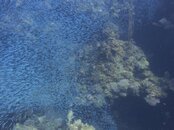 P7170014.jpg48.7 KB · Views: 107
P7170014.jpg48.7 KB · Views: 107 -
 P7170023.jpg47.3 KB · Views: 97
P7170023.jpg47.3 KB · Views: 97 -
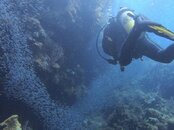 P7170036.jpg38.2 KB · Views: 104
P7170036.jpg38.2 KB · Views: 104 -
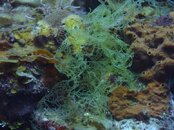 P7180057.jpg57.4 KB · Views: 104
P7180057.jpg57.4 KB · Views: 104 -
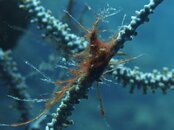 P7180070.jpg30.5 KB · Views: 98
P7180070.jpg30.5 KB · Views: 98 -
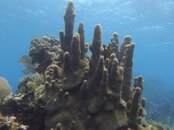 P7180085.jpg32.3 KB · Views: 97
P7180085.jpg32.3 KB · Views: 97 -
 P7180091.jpg46.1 KB · Views: 98
P7180091.jpg46.1 KB · Views: 98 -
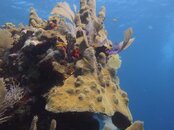 P7180132.jpg40.8 KB · Views: 99
P7180132.jpg40.8 KB · Views: 99 -
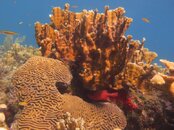 P7180139.jpg52.7 KB · Views: 88
P7180139.jpg52.7 KB · Views: 88 -
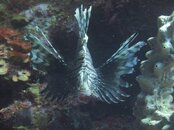 P7210012.jpg38.8 KB · Views: 93
P7210012.jpg38.8 KB · Views: 93 -
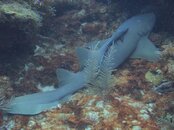 P7220029.jpg45 KB · Views: 96
P7220029.jpg45 KB · Views: 96 -
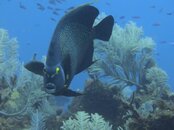 P7220032.jpg31 KB · Views: 80
P7220032.jpg31 KB · Views: 80 -
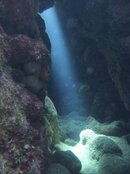 P7220040.jpg51 KB · Views: 88
P7220040.jpg51 KB · Views: 88 -
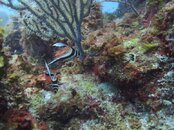 P7220052.jpg63.6 KB · Views: 88
P7220052.jpg63.6 KB · Views: 88 -
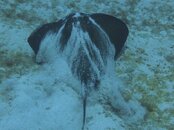 P7220063.jpg46.3 KB · Views: 90
P7220063.jpg46.3 KB · Views: 90 -
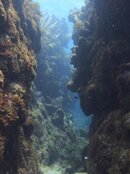 P7220069.jpg62.5 KB · Views: 96
P7220069.jpg62.5 KB · Views: 96 -
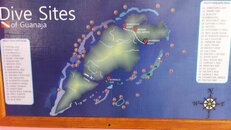 20140723.jpg32.4 KB · Views: 92
20140723.jpg32.4 KB · Views: 92 -
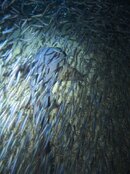 P7240009.jpg80.7 KB · Views: 82
P7240009.jpg80.7 KB · Views: 82 -
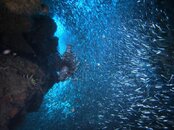 P7240010.jpg56.7 KB · Views: 102
P7240010.jpg56.7 KB · Views: 102 -
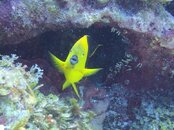 P7240022.jpg55.5 KB · Views: 101
P7240022.jpg55.5 KB · Views: 101



